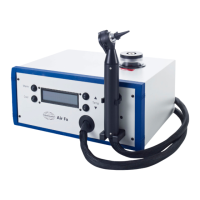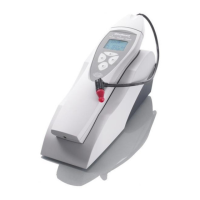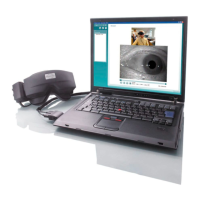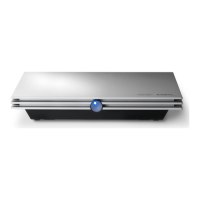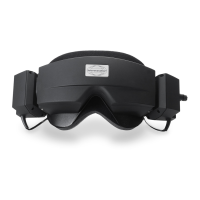Affinity
2.0
Additional Information Page 44
1.7.10 Weber
Originally the Weber test distinguished between conductive and sensorineural hearing loss through use of a
tuning fork. The fork was softly struck and placed in the middle of the patient’s forehead. If the patient heard
the tone better in the poorer ear the hearing loss was conductive, and if the tone was heard better in the
better ear the hearing loss was sensorineural at the given frequency. Today the Weber is most often
performed using a bone conductor because the tuning fork method only allows testing at one frequency,
unless you have multiple tuning forks. The bone conduction oscillator is placed in the midline and as a
stimulus is mostly a signal of 250, 500, and 1000 Hz chosen which should be clearly audible to the patient.
Using an audiometer together with a bone conductor to do the Weber is more reliable and flexible than the
tuning fork method and has therefore become widespread.
Required Items:
• The Affinity
2.0
hardware
• The AC440 software
• A bone conductor (B81)
Test Procedure:
1) Open the AC440 and enter the Weber screen by selecting Menu | Te sts | Weber
2) Input and Output selections for channel 1/channel 2 are fixed Tone and Bone.
3) Place the bone conductor on the patient’s forehead and instruct them to tell you if the tones presented
are heard better to the Right, Left, Centre or if it is Not heard at all.
4) Present a tone at a level of 10 dB above the worst BC threshold using the dB HL Decrease/Increase
buttons or the PC keyboard. You can select whether you want a Tone or Warble stimulus.
5) Await response from the patient and click on the corresponding button above the graph.
If the patient hears the tone better in the poorer ear the hearing loss is conductive, and the tone is heard
better in the better ear the hearing loss is sensorineural at the given frequency.
6) During the testing the frequency and intensity can be adjusted manually (see illustration).
7) Save the Weber test by clicking Save
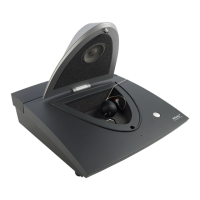
